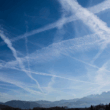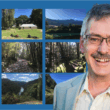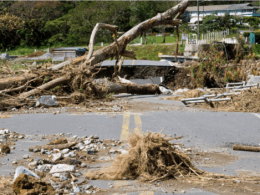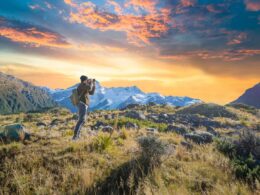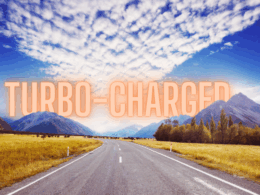I was recently invited to speak at the July meeting of Destination Queenstown and Lake Wānaka Tourism in Arrowtown. The purpose was to consider the need for a National Tourism Development Agency to oversee and guide tourism policy, planning and development in New Zealand. There is a groundswell of opinion in local and regional tourism circles that this is critical to the future of sustainable tourism.
This podcast episode takes the form of a “vlog” (possibly “vlogcast”) – I’ve recorded the presentation as a video so that you can see the slides I am referring to in the presentation. This was unscripted, but I have provided a transcript below.
Transcript
Kia ora koutou. My name is James Higham. I am a distinguished professor at Griffith University, but also an honorary professor at the University of Otago. And it’s my pleasure to present to Destination Queenstown and Lake Wanaka Tourism on Decentralising Tourism. This is a presentation that I delivered in early July in Arrowtown to the members of Destination Queenstown and Lake Wanaka Tourism and I will also be using this presentation for my podcast next week due on the 22nd of July.
The reason why I’ve been invited to speak today is partly at least because of my podcast ‘Checking In’. I use this fortnightly podcast – now in its 29th episode – to explore issues of sustainable tourism informed by my research, by the research of some of my colleagues internationally and in New Zealand, and I use this platform to address some of the critical challenges in sustainable tourism, issues that are of importance and usefully informed by research, policy, and practical insights.
My checking in podcast can be accessed online via my website, but on this slide, you can see my email address. Please do email me if you’d like to register to receive updates on my podcast.
The reason for my podcast is inspired by the fact that we’ve actually known for years, if not decades, that sustainable tourism raises some critical challenges. Particularly since the northern summer season of 2017, when ‘overtourism’ became a major focus of concern, particularly in Europe, but in other parts of the world as well. So we have now got to confront – and it’s really important that governments confront – issues of sustainable tourism through policy and planning mechanisms that are really carefully considered.
Before I left Australia to travel to Queenstown for the presentation, I was interested to note in the news that Australians are beginning to question their so-called ‘Bali dream’ because of issues of over tourism. In the Australian media reference has been made to Bali becoming a “tourist hellhole”. So, for example, efforts to capture a beautiful sunset completely compromised by enormous hordes of visitors. This is a classic example of overtourism in action.
But I also offer a podcast because I am concerned about getting tourism planning right, getting tourism policy right in places that are so special and so important in Aotearoa New Zealand, and arguably none more so than Central Otago. It’s always such a delight to return to Central Otago and to experience its unique and special qualities. Those very qualities, very vulnerable to tourism development and potentially very vulnerable to overtourism.
In my recent podcasts, I’ve questioned tourism in terms of boom and bust. And on this slide (See slidedeck below, Slide 6), we can see examples from New Zealand’s past and present of boom and bust cycles in economic development. On the top left here sealing and bottom right, whaling.
Interestingly, in the days before I travelled to New Zealand, I was in Byron Bay where the annual migration of humpback whales can be viewed from coastal positions. These are majestic migrations of humpback whale populations moving north to breed during the winter season. I was interested to note that both local residents and tourists were engaged in citizen science, recording observations of whales, contributing to counts of whales as they migrated up the coastline. And these citizen science projects reveal that the humpback whale populations that were so depleted through commercial whaling over many decades are now considered to be returning to pre-hunting population levels, although we don’t know the precise baseline population pre-commercial whaling.
We do know that the Eastern Australian seaboard humpback whale population is now around 45,000 individual animals. But during the height of commercial whaling, and when commercial whaling ended as recently as the 1970s in Australia and New Zealand, that population had been depleted to an estimated 300 individual animals. So these are examples of exploitation of natural resources. It is wonderful to see those animal populations recovering and therefore, and once again, serving a really important role in terms of local communities and tourism.
In the bottom left of the slide, we see the boom and bust cycle of Kauri exploitation in the far north of New Zealand. Whilst now we’re seeing enormous efforts focusing on restoring the Kauri forests in the far north, that is an endeavour that will take much, much longer – thousands of years and many thousands of years to try and restore the ecological complexity of the Kauri forests in the far north of Aotearoa.
Then of course, in the case of the image on the top right here, open cast mining, which destroys landscapes and of course offers absolutely no possibility of restoring those landscapes over any future timeframe. Of course, all of these images are very relevant to tourism, but they also raise questions about tourism boom and bust cycles. Coming back to Central Otago, I think it’s really important to ask, what are the vulnerabilities for tourism in Central Otago communities?
The answer to that question, in my view, focuses very much on social license (Slide 8). That is the acceptability of tourism and particularly tourism growth over time within the communities that live with tourism. So what are some of the social license issues that may be of particular importance and particular relevance and perhaps particular concern to Central Otago communities?
On this slide (Slide 9) I illustrate some of the answers to this question, again, through images. Top left, crowding, congestion, traffic congestion. When people in their own communities are unable to conveniently drive to places of work, to school pickups, to supermarkets, due to crowding and congestion caused by tourism, that is likely to compromise social license.
So too, access to beautiful and iconic natural areas. Having to queue for views in popular natural areas, again, is indicative of over tourism and unsustainable tourism within our communities. The caption for the image on the bottom left (Slide 9) is truncated, but it reads “Your Airbnb was once my home: Spain’s housing crisis intensifies”. So we also see compromise of social license where community structures are degraded through the housing crises, with temporary short-term accommodation for visitors displacing local residents.
I include the image on the bottom right (Slide 9) – the stunning image of Central Otago lakes – to remind me of the social license issues and vulnerabilities associated with mana whenua. So in local indigenous communities, there are in tourism many “nice-to-haves”, but environmental protection and exercising Kaitiakitanga is a “must-have” for indigenous communities. So questions of water quality and protecting water is hugely important to mana whenua. So too is exercising manaakitanga, so making sure that communities have sufficient resources and assets such as healthcare to look after elderly members of communities, but also to make sure that we can look after visitors if they become unwell when visiting the destination. All of these examples of manifestations of social capacities, community capacities that if exceeded bring with it the risk of tourism boom and bust cycles.
This leads us to the critical importance of tourism policy and tourism planning and I offer this quote from Stephen Kennedy from last year (Slide 10) which reads that “evidence informed policy making is a deliberate and rigorous approach that seeks to support policy with the best available evidence rather than developing policy based on intuition, ideology, anecdote or short term political or economic expediency”. It is really important for us to pause and reflect and think about questions such as what is the evidence base for tourism? How is that evidence base produced and communicated? How is it taken up and acted upon? And how does it inform policy that supports tourism regions and businesses? These are really critical questions.
To begin to answer these questions, I think it is really important to acknowledge that tourism policy is challenging (Slide 11-12). It is not easy. And there are various reasons that we can identify for this. Tourism is a constantly evolving phenomenon. It is prone to sudden and unpredictable shifts. Tourism is very dynamic and we’ve learned this through the COVID pause, the massive disruption of tourism through COVID. Currently we’re seeing this through the rise of AI technologies and the impacts of those technologies on tourism.
Tourism is also very disparate. It involves a lot of players in the provision and the delivery of tourism from national and local providers across complex timeframes, seasonal timeframes and such like. And of course tourism faces a range of external challenges. The most significant perhaps right at the moment is climate change. How we address these external challenges through tourism is critically important. Of course, tourism is difficult to manage. Markets, patterns of demand, and visitor behaviours are constantly evolving and changing. Tourism is also political. What we have seen in New Zealand and other countries is that changes in government often result in sudden reversals in policy directions for tourism.
Tourism policy is also challenged by the fact that tourism is often misunderstood by policymakers and seen to be a purely economic activity. Often the focus of governments is on economic growth and tourism is seen to be an easy option to advance economic growth imperatives. But this results in a failure to recognize public value and public values associated with tourism.
Tourism is uneven in how it unfolds across different regional scales. In tourism, we may have overtourism in some regions and, in neighbouring regions, a wish for more tourism because tourism is often concentrated rather than dispersed. This raises critical policy challenges all of which makes stable tourism policy very difficult to achieve.
In New Zealand, we have a situation in which we are seeing some really significant policy failures. One of the things that concerned me when I was co-directing the Tourism Policy School over its first five years (2019-2023) was that when we invited ministers to present the opening address for the Tourism Policy School, in most years, we were dealing with new ministers (Slide 13). So there’s this regular and routine turnover of tourism ministers and the ministries that serve those ministers often lack courage. The Ministry of Business, Innovation and Employment is the key ministry for tourism policy making in New Zealand and we often see a high turnover of staff within ministries which can be healthy in some respects but it often results in a lack of strong and clearly directed policy development.
What we find is that tourism policy is often presented in glossy strategies. I refer to these as ‘words on websites’, which look good and express certain ambitions, but often those policies are poorly implemented, if implemented at all. We find that the evidence-base and expertise for tourism is often ignored. There are lots of examples of really strong research-informed insights into policy directions that seem to be ignored by ministers and ministries. So often the evidence base is lacking in terms of implementation.
Good policy should consider options, implementation models, should be committed to measuring outcomes and revising policy if the desired outcomes are not achieved. What we find is that often government policy is swayed by vested interests, advocacy, and lobbying. And then those glossy strategies, those ‘words on websites’, soon disappear altogether.
So what I’d argue is that in New Zealand policy circles, what we have at the moment is chaotic, unpredictable, piecemeal, and totally ineffective (Slide 14). We need to think about how we can revise and resolve these issues of tourism policy making in New Zealand. These are questions that we raised in a recent piece published in The Conversation (Slide 15). I co-wrote this with my colleagues Regina Scheyvens (Massey University) and Susanne Becken (Griffith University) as a critique of New Zealand’s current tourism strategy, which is to “welcome anyone from anywhere, anytime”, which we argue in this piece of writing is not a sustainable tourism policy at all. We were really interested and very pleased to see that this piece of writing when published in The Conversation was read over 92,000 times. So there 9is clearly a lot of public interest in tourism policy making and how it can be done much more effectively than what we see at the moment.
On this slide (Slide 16), I illustrate some of the actors, some of the key agencies involved in tourism planning, tourism policy and management in Aotearoa. So let’s begin from the top. The Minister for Tourism and Hospitality, as I’ve mentioned, we often see rapid turnover in ministers. And those ministers, when they take up the new portfolio, cannot be expected to be knowledgeable and aware of the tourism research and historical tourism policy that is of importance to this portfolio. We did once have a Ministry for Tourism. Not so long ago, 10 or 15 years ago, we had a dedicated tourism ministry and the Minister for Tourism was the Prime Minister, John Key. So of course tourism was represented around the cabinet table.
Now tourism plays a small part of one mega ministry, the Ministry of Business Innovation and Employment, and has no place around the cabinet table. These are challenges for one of, if not, New Zealand’s most important economic export sectors. I put on the slide New Zealand Immigration, which manages the collection of the International Visitor Levy (IVL).
So it plays an important part in tourism, obviously. The IVL was initially intended for conservation, biodiversity and infrastructure investment. So I located New Zealand Immigration alongside the Department of Conservation in the slide. But on the right-hand side, we have Tourism New Zealand, which is now currently the primary recipient of IVL funding, which is inconsistent with the intentions of that levy. More on that in just a moment.
Across the middle of the slide (Slide 16) , you can see the Parliamentary Commission of the Environment, the ‘We Are Aotearoa’ visitor strategy, which was the key output of the Tourism Futures Task Force funded by government during the COVID break, and the Milford Opportunities Group, all of which provide research-informed advice to government. But it’s extraordinary in my view that pretty much across the board, these research-informed insights and policy recommendations have been completely ignored by government. The ‘We Are Aotearoa’ strategy is a classic example of ‘words on websites’ – A glossy strategy providing really strong directions for tourism policy making in New Zealand that has disappeared. We’ve lost all trace of that extremely promising and well-researched piece of policy advice.
Below we have other key agencies such as Tourism Industry Aotearoa, the Tourism Export Council, Local Government New Zealand and Regional Tourism New Zealand, all key players in delivering tourism in New Zealand. But again, we have some really challenging issues with some of these agencies. Local Government New Zealand, for example, is very poorly resourced and funded to manage tourism within regions, particularly within regions that are facing critical challenges in tourism demand. Regional Tourism New Zealand was funded during COVID to produce destination management plans (DMPs). These are great assets for giving local voice to tourism management, tourism development pathways. But Regional Tourism New Zealand, the RTOs, now lack any funding to implement those destination management plans.
And then across the bottom, have local communities, community boards, and tourism businesses that in most cases are doing a fantastic job of delivering tourism within those communities and delivering tourism experiences. But the overall picture here is one of multiple different agencies, a complexity of agencies that are seeking to advance tourism development in Aotearoa, but are doing so in ways that are disparate and largely disconnected and poorly coordinated.
My view is that the current system is not serving New Zealand well (Slide 17). We currently have a situation where tourism policy and planning is crippled by political footballing, with different governments bringing different political agendas to tourism, resulting in dramatic reversals in policy directions. I’ve mentioned the constant turnover of ministers and others in public sector roles, which effectively makes it impossible to create consistent and carefully planned policy directions. We lack strategic direction and policy to support the strategic imperatives of tourism development. We have agencies that are essentially doing their own thing.
Tourism New Zealand is a classic example of this – with a focus on international marketing to the neglect of domestic tourism marketing and with very little close connection to the aspirations of regional tourism destinations. We have unclear, undefined or disconnected responsibilities, which is particularly evident in ineffective, and ad hoc funding. We have destination management plans that I think are a great credit to Regional Tourism Organizations, but a lack of funding and resourcing to actually action and implement the key principles of those destination management plans. Currently, we have an almost complete failure to acknowledge or address long-term challenges, such as climate change in tourism policy. These are challenges that are rarely clearly stated, and of great importance in regional destination management plans, but at the national scale, there’s a complete failure to acknowledge and address such challenges. We have different stakeholders interacting in cross-cutting ways with differing and poorly coordinated agendas and governments that are subject to lobbying as a key form of communication when it comes to tourism policy directions.
I want to consider briefly the international visitor levy because I think this is indicative of some of the problems that we currently face with tourism policy making in New Zealand (Slides 18-20). This is a quote from New Zealand Immigration and it explains to international visitors the purpose of the IVL, which is explained as “Your contribution to maintaining the facilities and natural environment you will use and enjoy during your stay in New Zealand”. The IVL is overseen by the Ministry of Business Innovation and Employment (MBIE) on behalf of the government. Last year, in May 2024, MBIE conducted a survey of key tourism stakeholders to address the use of the international visitor levy for conservation and tourism.
Specifically key tourism stakeholders were asked to consider how much the IVL should amount to per eligible visitor (international visitors from the Pacific Islands in Australia are exempt from the IVL) and where funding generated through the IVL should be directed. The results of that survey were pretty emphatic. There was a very clear consensus with the majority of submitters supporting an increase in the IVL, and strongly agreeing that the IVL should be directed to addressing visitor pressures on mixed-use tourism infrastructure use. The focus here is very much as originally intended with conservation, biodiversity and infrastructure funding. And a majority of submitters strongly disagreed or disagreed with the IVL being used to contribute to the funding mix for international tourism marketing investment directed to Tourism New Zealand.
As we know, the results of this survey, again, this is I think, a classic example of policy that ignores data, survey insights, and research. The tourism strategy that has recently been released by the Ministry of Business Innovation and Employment (Slide 21), directs the IVL currently 100% to demand management and tourism marketing. Over the next year the vast majority, 80% of IVL investment, will be directed to demand generation through tourism marketing. I see this as a classic example of misappropriation of the IVL and ignoring insight and research that should be informing tourism policy directions.
So the question arises, what do we need to create order out of some of this chaos? I would like to express the view that in New Zealand, we need to give consideration to a National Tourism Development Authority (Slide 22). A National Tourism Development Authority would be a statutory body which would be established by an act of parliament created by law (Slide 23) with powers and duties outlined in the law. Such a body would carry out specific functions and responsibilities as defined by the legislation, but would do so in a way that is one step removed from the government of the day. A statutory body would be tasked with implementing legislation, providing services, and regulating or overseeing certain activities on behalf of the government.
We do have examples in New Zealand of exactly these sorts of statutory bodies, such as the New Zealand Infrastructure Commission. I quite like the text on this slide (Slide 24), because in my view, if you were to translate infrastructure into tourism in these cases, you would have precisely what I think we need by way of a national tourism authority. So for example, “our tourism is vital to our way of life, supporting almost everything we do. The New Zealand Tourism Commission would work as a catalyst for change, helping Aotearoa to get better results from our tourism”.
Interestingly, when we look at some cases overseas, we see some very impressive and successful examples of precisely this (Slide 25). Failta Ireland, for example, is a national tourism development authority in Ireland that is one step removed from government, but able to support government to make sure that tourism policy is developed in ways that serve not only the economic, but also the social, cultural and environmental interests of the national destination.
In this particular case, the National Tourism Development Authority overseas regional experience brands, addresses development challenges such as climate change, is informed by research, and indeed maintains a clearinghouse of important research that should inform tourism policy development on an ongoing basis. The National Tourism Development Authority in this instance provides guidance on funding and investment for tourism related infrastructure and oversees registration and grading, as well as coordinating marketing efforts for regions, destinations, and the national destination as a whole.
This tourism policy framework (Slide 26) has just been released in the last few days in Ireland, and it is directly informed by Failte Ireland, the National Tourism Development Authority, which also plays a part in implementing the tourism policy framework for 2025-2030 in this particular case. On this slide, I include my email address at the bottom of the slide. Please feel free to email me if you would like to receive a copy of this policy framework. I’d be more than happy to share it. As you can see in this table of contents, just the first section of the table of contents, this is a policy framework that relates and addresses directly economic importance of tourism, but also social, environmental, and climate change challenges, the environmental sustainability challenges, and other such issues confronting Ireland’s tourism sector.
What I would like to suggest as a means of creating order out of chaos in New Zealand, is that we give consideration to a national tourism development authority (Slide 27) that would involve both public and private sector interests and provide a coordinated approach to tourism development priorities. Here we can see some of the key coordination priorities that such an authority would be well placed to coordinate and advise government on (Slide 27), such as tourism infrastructure and regional development strategies, investment priorities, managing funding programs such as the IVL, registration and grading, and short-term strategic support for such challenges and opportunities, such as how artificial intelligence is changing the face of tourism.
Secondly, in order to create some order out of this chaos, I think it’s really important that in New Zealand, we seek to create unique and world-class macro regions (Slide 28), which I think would be a far more effective unit of analysis for developing and advancing tourism policy and tourism development in New Zealand. I was interested a couple of months ago to see this news item relating to North Island tourism operators moving beyond competition within small regions to collaboration and cooperation between regional tourism organizations in a wider macro region (Slide 28). The inspiration behind this is to seek to better coordinate tourism supply and demand so that visitors are encouraged to spend more time within regions rather than flying in and out and moving between destinations in the country, spending more time within clearly defined and clearly marketed macro regions.
The situation currently is that we have 31 regional tourism organizations in New Zealand (Slide 29). What I would suggest is that we rethink the regional organization of tourism in New Zealand into perhaps five macro regions, such as the example that’s emerging in the north. In the South Island, we have the Southern Way initiative, which is a coordination of eight regional tourism organizations (RTOs) in the lower South Island. I think that this makes a huge amount of sense. Currently, our 31 regional tourism destinations in most cases lack visibility, but what we would achieve through the merging of regions into macro regions would be uniquely branded destinations that have strategic and focused regional tourism marketing support.
Across these macro regions, I think it would be far more effective and efficient in terms of creating tourism supply, such as regional cycle networks that coordinate destinations within those macro regions while balancing supply and demand. Rather than having very concentrated tourism arrivals into iconic destinations like Queenstown, encouraging visitors to explore the macro regions more widely, bringing dispersed benefits across communities within those regions.
And thirdly, in order to create a bit more order out of chaos, I think it’s really important that we consider systematic tourism investment and how we can better address tourism policy that meets both supply and demand imperatives (Slide 30). In my view, this requires investment in tourism superstructure, infrastructure and facilities. I think it’s really important that we’re clear about these key terms. We might think of infrastructure as the road network of a city, while the superstructure of a destination are the buildings that line those roads.
I like to think of superstructure as the ‘vital organs’ in our societies, such as hospitals and rural health services, housing and disaster and emergency response resources. Whereas infrastructure we might think of as the connecting arteries between those vital organs – the roads, bridges, power grids, sewerage systems and communication networks that serve our communities. Then in tourism we also need to think about funding of local facilities, public toilets, car parks, information centres and such like.
We have a problem currently in tourism in Aotearoa, New Zealand with superstructure and infrastructure funding. This requires us to move beyond seeing tourism as an economic growth opportunity without the need for investment in the superstructures and infrastructures required to support tourism growth (Slide 31). We need central and regional funding for tourism – central funding perhaps through tourism GST revenue, regional funding perhaps through regional bed taxes and similar such initiatives.
I would argue that the International Visitor Levy is totally inadequate to address any of these superstructure and infrastructure requirements beyond conservation, biodiversity and local facilities. I think what we need is a National Tourism Development Commission or a National Tourism Development Agency that can advocate for and oversee central and regional investment for tourism. Such an agency would foster collaboration with other statutory bodies such as the Infrastructure Commission. It just makes such logical sense for a tourism agency and the Infrastructure Commission to work closely together (Slide 31). Currently infrastructure investment in New Zealand gives little or no attention to tourism demand within communities. And in cases such as Queenstown, where tourism arrivals so greatly outnumber local residents, this is just completely unsustainable.
So to summarize, we do face boom and bust risks in tourism in places such as Central Otago (Slide 32), and some of those greatest risks include infrastructure stress and congestion, most obviously. Through such stresses, we risk loss of community support, and loss of lifestyle values. Perceived local rate payer subsidization of tourism is a major threat for tourism and regional destinations. And of course, environmental protections, crowding at iconic sites, protecting and enhancing biodiversity and water quality. All of these are great risks that are directly linked to the current trend of declining social license within the tourism destinations and the communities that live with tourism.
So my argument is that to create order out of chaos, we need to think about decentralizing tourism (Slide 33). Currently, we see a lack of progress towards sustainable destination management, which has been widely attributed, including in this white paper produced two years ago by regional tourism New Zealand (Slide 33 Tonui: A White Paper Examining the past, present and future of regional tourism in Aotearoa New Zealand). We need to address the fact that currently we have “…centralized power addressing decentralized regional problems in tourism”. And to quote that report again “…an unfunded (non)-mandate with local government being under-resourced and needing to prioritize resources to core activities”, all of which contributes to the neglect of funding, resourcing and investment in tourism as needed within those regional destinations.
To address these problems, and I think to decentralize tourism, we need a National Tourism Development Authority. We need to define and resource world class macro regional destinations. And we most certainly need systematic and strategic tourism investment to support this key sector of the New Zealand.
****
I will conclude with the interesting point that these very lines of thought have been expressed by the mayor of Queenstown Lakes District, Glyn Lewers (Slide 34), who has expressed the view that we actually “need to have a really good look at how we manage and structure the tourism system (not just within our regions but) across the entire country”. So in my view, the time is right to be engaged in exactly these sorts of discussions. I think that there is at least local and regional political will to advance these very lines of discussion and debate.
References
Higham, J.E.S. (2025). Decentralising tourism: Integrating policy, practice, people and place. Destination Queenstown and Lake Wānaka Tourism (RTOs). Arrowtown, New Zealand. 10 July 2025. Slide deck PDF.
Scheyvens, R., Higham, J.E.S. & Becken, S. (2024). New Zealand’s plan to ‘welcome anyone, from anywhere, anytime’ is not a sustainable tourism policy. The Conversation (23 June 2025). Reprinted in TourismTicker (24 June 2025). https://theconversation.com/nzs-plan-to-welcome-anyone-from-anywhere-anytime-is-not-a-sustainable-tourism-policy-259246
Regional Tourism New Zealand (2023). Tonui: A White Paper Examining the past, present and future of regional tourism in Aotearoa New Zealand. https://rtnz.org.nz/wp-content/uploads/2023/05/Tonui-Summary-1.pdf

